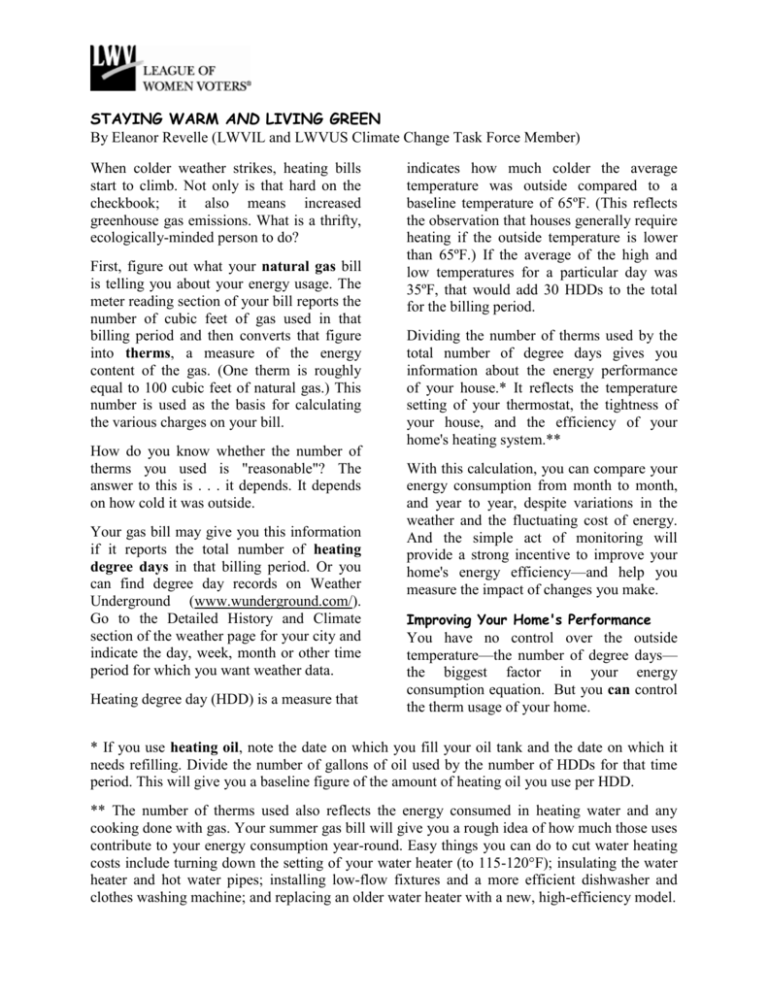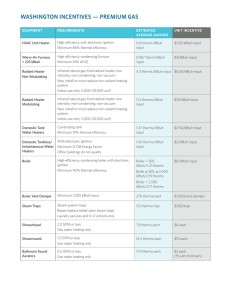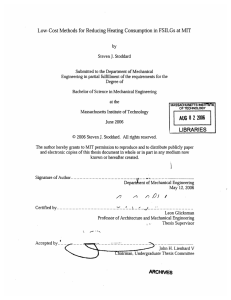VoterReady_StayingWarm
advertisement

STAYING WARM AND LIVING GREEN By Eleanor Revelle (LWVIL and LWVUS Climate Change Task Force Member) When colder weather strikes, heating bills start to climb. Not only is that hard on the checkbook; it also means increased greenhouse gas emissions. What is a thrifty, ecologically-minded person to do? First, figure out what your natural gas bill is telling you about your energy usage. The meter reading section of your bill reports the number of cubic feet of gas used in that billing period and then converts that figure into therms, a measure of the energy content of the gas. (One therm is roughly equal to 100 cubic feet of natural gas.) This number is used as the basis for calculating the various charges on your bill. How do you know whether the number of therms you used is "reasonable"? The answer to this is . . . it depends. It depends on how cold it was outside. Your gas bill may give you this information if it reports the total number of heating degree days in that billing period. Or you can find degree day records on Weather Underground (www.wunderground.com/). Go to the Detailed History and Climate section of the weather page for your city and indicate the day, week, month or other time period for which you want weather data. Heating degree day (HDD) is a measure that indicates how much colder the average temperature was outside compared to a baseline temperature of 65ºF. (This reflects the observation that houses generally require heating if the outside temperature is lower than 65ºF.) If the average of the high and low temperatures for a particular day was 35ºF, that would add 30 HDDs to the total for the billing period. Dividing the number of therms used by the total number of degree days gives you information about the energy performance of your house.* It reflects the temperature setting of your thermostat, the tightness of your house, and the efficiency of your home's heating system.** With this calculation, you can compare your energy consumption from month to month, and year to year, despite variations in the weather and the fluctuating cost of energy. And the simple act of monitoring will provide a strong incentive to improve your home's energy efficiency—and help you measure the impact of changes you make. Improving Your Home's Performance You have no control over the outside temperature—the number of degree days— the biggest factor in your energy consumption equation. But you can control the therm usage of your home. * If you use heating oil, note the date on which you fill your oil tank and the date on which it needs refilling. Divide the number of gallons of oil used by the number of HDDs for that time period. This will give you a baseline figure of the amount of heating oil you use per HDD. ** The number of therms used also reflects the energy consumed in heating water and any cooking done with gas. Your summer gas bill will give you a rough idea of how much those uses contribute to your energy consumption year-round. Easy things you can do to cut water heating costs include turning down the setting of your water heater (to 115-120°F); insulating the water heater and hot water pipes; installing low-flow fixtures and a more efficient dishwasher and clothes washing machine; and replacing an older water heater with a new, high-efficiency model. Dialing down the thermostat is the most direct step you can take. In colder climates like the upper Midwest, every degree that you lower the setting on your thermostat will result in roughly a three percent reduction in the amount of energy used. Installing a programmable thermostat can also bring significant energy savings. By automatically adjusting the temperature setting for your home, this simple device makes it easy to lower the setting when less heat is needed—for example, when you’re asleep or away for the day. Taking steps to minimize heat loss from your home is next on the list. Adding insulation is one of the most cost-effective improvements you can make, and the attic is the best and easiest place to start. Proper insulation levels in the walls, foundation, and basement or crawl space will also help make your house tighter—and more comfortable. Sealing air leaks—a major source of heat loss in older homes—is another very important energy-saver. You can spot many of these problem areas on your own with a do-it-yourself home energy audit. Or you can arrange for a professional auditor to carry out a more thorough assessment of your home. Some utility companies conduct audits or can recommend an energy auditor. The third area for attention is your home's heating system. You can improve its efficiency by insulating ducts (if you have a furnace) and hot water/steam pipes (for a boiler) that pass through unheated spaces, changing the air filter regularly (furnace), and arranging for regular professional maintenance. Your heating service company can also advise you as to whether replacing your existing furnace or boiler with a new, highefficiency unit would make sense. If you are planning to remodel your current home or build a new house, you have an opportunity to "build green" from the start. By making it a priority to incorporate energy-efficient design features and take advantage of new technologies and materials, you can have a high-performance home that minimizes energy consumption and maximizes comfort and durability. But you don't have to build a new house to save energy. Every small step that each of us takes to improve our homes' energy efficiency will achieve savings and help reduce global warming. Resources for Home Energy Audits The U.S. Department of Energy's Consumer's Guide to Energy Efficiency and Renewable Energy (www.eere.energy.gov/consumer/your_home/) includes a helpful tutorial on home energy audits as well as detailed information about insulation, sealing air leaks, and heating systems. Home Energy Saver (http://hes.lbl.gov/) is a web-based do-it-yourself energy audit tool designed to help consumers identify the best ways to save energy in their homes and find the information and resources to make those savings happen. Consumers can find a certified energy rater in their state through the Residential Energy Services Network (RESNET) Certified Rater Directory (www.resnet.us/directory/raters.aspx). Produced by the LWVUS Climate Change Task Force © 2008 by the League of Women Voters of the United States







